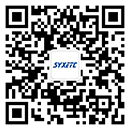LDO is a low dropout regulator, which means a low dropout linear voltage regulator, which is compared to the traditional linear voltage regulator. Traditional linear voltage regulators, such as the 78xx series of chips, require the input voltage to be more than 2V~3V higher than the output voltage, otherwise they will not work properly. But in some cases, such conditions are obviously too harsh. For example, when converting 5v to 3.3v, the voltage difference between the input and output is only 1.7v, which obviously does not meet the conditions. In response to this situation, LDO power conversion chips are available.
DC-DC power module means DC to DC (conversion of different DC power values). As long as it meets this definition, it can be called a DC-DC converter, including LDO. But the general saying is that the device that converts DC into (to) DC by switching is called DC-DC.
If the input voltage and output voltage are very close, it is best to use an LDO regulator, which can achieve high efficiency. Therefore, LDO regulators are mostly used in applications that convert lithium-ion battery voltage to a 3V output voltage. Although the final 10% of the battery's energy is not used, the LDO regulator can still ensure that the battery has a longer working time and lower noise.
If the input voltage and output voltage are not very close, you should consider using a switching DCDC. From the above principle, we can know that the input current of the LDO is basically equal to the output current. If the voltage drop is too large, the power consumption in the LDO The energy is too high and the efficiency is not high.
DC/DC converts a certain DC input voltage into another DC output voltage. Common structures include Boost, Buck, Boost and Buck, and inverting structures. LDO is the abbreviation of low dropout voltage regulator, which is a low dropout linear voltage regulator. They all stabilize an input voltage to a certain voltage, and LDO can only be used as a buck output.
DC-DC converters include boost, buck, boost/buck and inverting circuits. The advantages of DC-DC converters are high efficiency, large current output, and low quiescent current. As integration increases, many new DC-DC converters require only a few external inductors and filter capacitors. However, this type of power controller has large output ripple and switching noise and is relatively expensive.
website:/en/news_view_503_256.html
 Chinese
Chinese ENGLISH
ENGLISH


